Находясь на данном сайте, вы даете согласие на использование файлов cookie и других технологий для обработки персональных данных.
Подробнее вы можете ознакомиться на странице
политика обработки персональных данных
12 летний Абхиманью Мишра самый молодой гроссмейстер
12 летний Абхиманью Мишра стал самым молодым гроссмейстером в истории шахмат.
Гельфанд снова первый на фестивале в Леоне
Израильский гроссмейстер второй раз победил на фестивале в испанском Леоне.
Аронян выиграл Goldmoney Asian Rapid
В последний игровой день, Левон Аронян довольно быстро выиграл финал Goldmoney Asian Rapid. Потребовались всего две ...
В финале турнира GoldMoney сразятся Аронян и Артемьев
Армянский гроссмейстер Левон Аронян и россиянин Владислав Арьтемьев встретятся в финале турнира GoldMoney
Каспаров справляет день рождения, пресс-конференция Дворковича
День рождения Каспарова, интервью Дворковича, «Uide Bol Cup» 2020.
В предпоследнюю неделю уходящего года в Москве проходил очередной турнир поколений «Щелкунчик».
Приближается чемпионат в Саудовской Аравии
С 26 по 30 декабря в столице Саудовской Аравии Эр-Рияде пройдет чемпионат мира по рапиду и блицу.
Уже ставший знаменитым турнир пройдет в российской столице с 19 февраля (день приезда) по 2 марта (день отъезда).
Кубок мира стартует в Тбилиси.
128 гроссмейстеров разыграют две путевки в турнир претендентов.
Lesson 7
Lesson 7. Castling and EN passant.
Two more chess rules will be introduced in this lesson. They were intentionally separated under one topic, because they are not always immediately remembered by novice chess players.
Castling.
It was already indicated before that king is the most important piece on the chessboard, and, therefore constant protection is required for it. Usually at the beginning of the game main fight is tied in the center, exactly where the king is placed. Therefore the question arises, where to hide it from the potential attack of the opponent's pieces. The answer is to castle!
Castling consists of moving the king two squares towards the rook right or left, then placing the rook on the other side adjacent to it.
Whites and blacks are able to castle. Castling can be short and long. The short one is made in the direction of king side and the long one is made in the queen side direction. Visually how castling can be made by the whites and blacks is shown below.
Short castling:
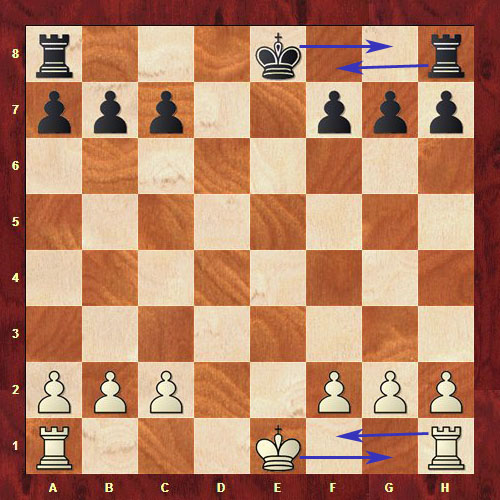 |
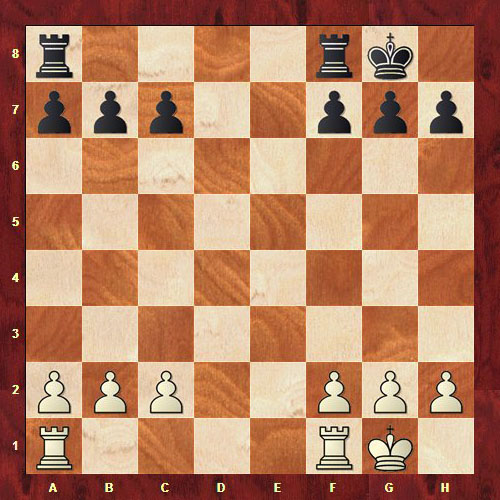 |
| Before castling | After castling |
Long castling:
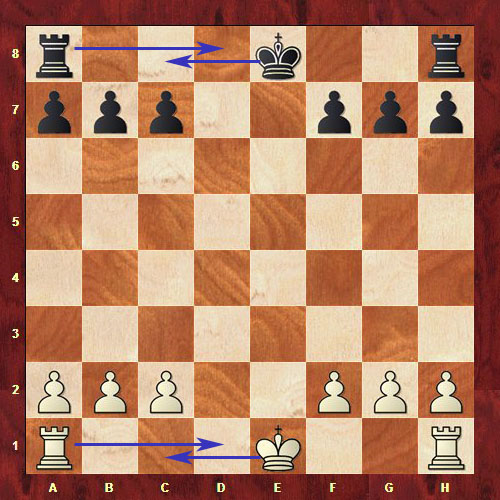 |
 |
| Before castling | After castling |
Thus king will be well protected and its security can be less cared.
Castling is only permissible if all of the following conditions hold:
- The king and rook involved in castling must not have previously moved.
- There must be no pieces between the king and the rook.
- The king may not currently be in check. That means, if you are in check you are not able to castle at this point.
- The king may not pass through or end up in square that is under attack by the enemy piece.
Castling constitutes the only move, although two pieces are involved. Castling can be made only once per game.
En passant
En passant is a move when pawn is able to capture opponent's pawn, if it advances two squares from its original square and ends the turn adjacent to pawn of opponent on the same rank.
As you remember, from the lesson 3 in its first move pawn is able to move two squares forward, that means to advance one square. If this square is exposed by the opponent’s pawn than it is able to capture it.
Graphically it looks as follows:
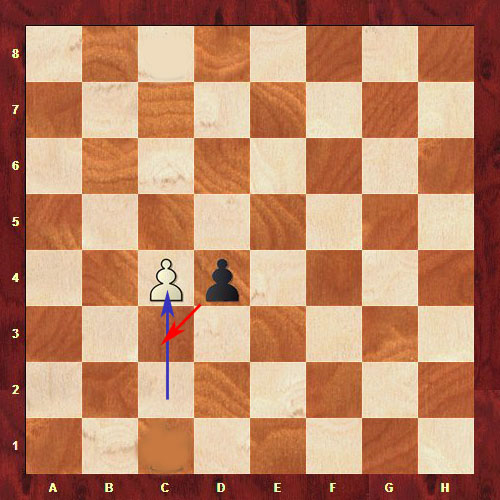 |
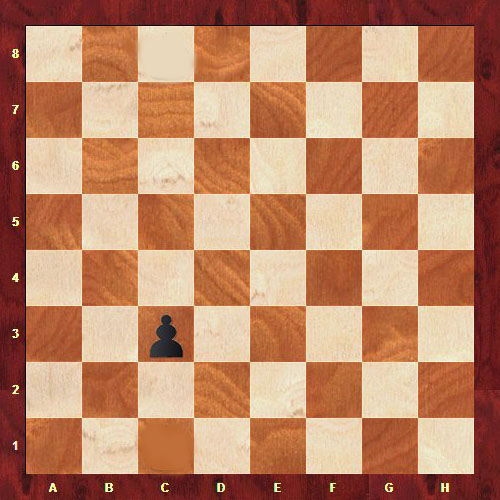 |
| 1) White pawn has just made two moves forward. Square is taken exposed by the black pawn |
2) Black pawn captures the white one. Thus is moves to the square exposed |
Thus, black pawn captured the white one and moved to the square exposed but not to the square where the white pawn used to stay, as is the case of ordinary attacks. It is possible to perform EN passant only in the next move, otherwise later that right is lost.
This rule is not always easily perceived from the first time. Read it again:). When I used to learn how to play, I was able to realize it only from the second attempt.
In the following Lesson we will repeat concepts of "check" and "checkmate» and we will discuss possible results of the chess game.
All lessons:
1. Conversance to chess game. Chessboard.
2. Chess pieces. Placement of pieces on the board.
3. How to move pieces? Pawn, knight.
4. How to move pieces? Bishop, rook.
5. How to move pieces? Queen, king.
6. Comparative strength of pieces and goal of the game
7. Castling, EN passant,
8. Checkmate. Result of the game.
9. Draw in chess.
10. Recording chess game
11. Importance of practical training










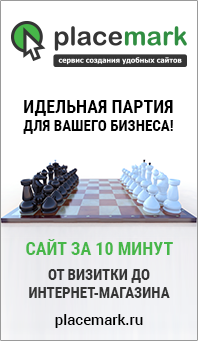
Оставить комментарий